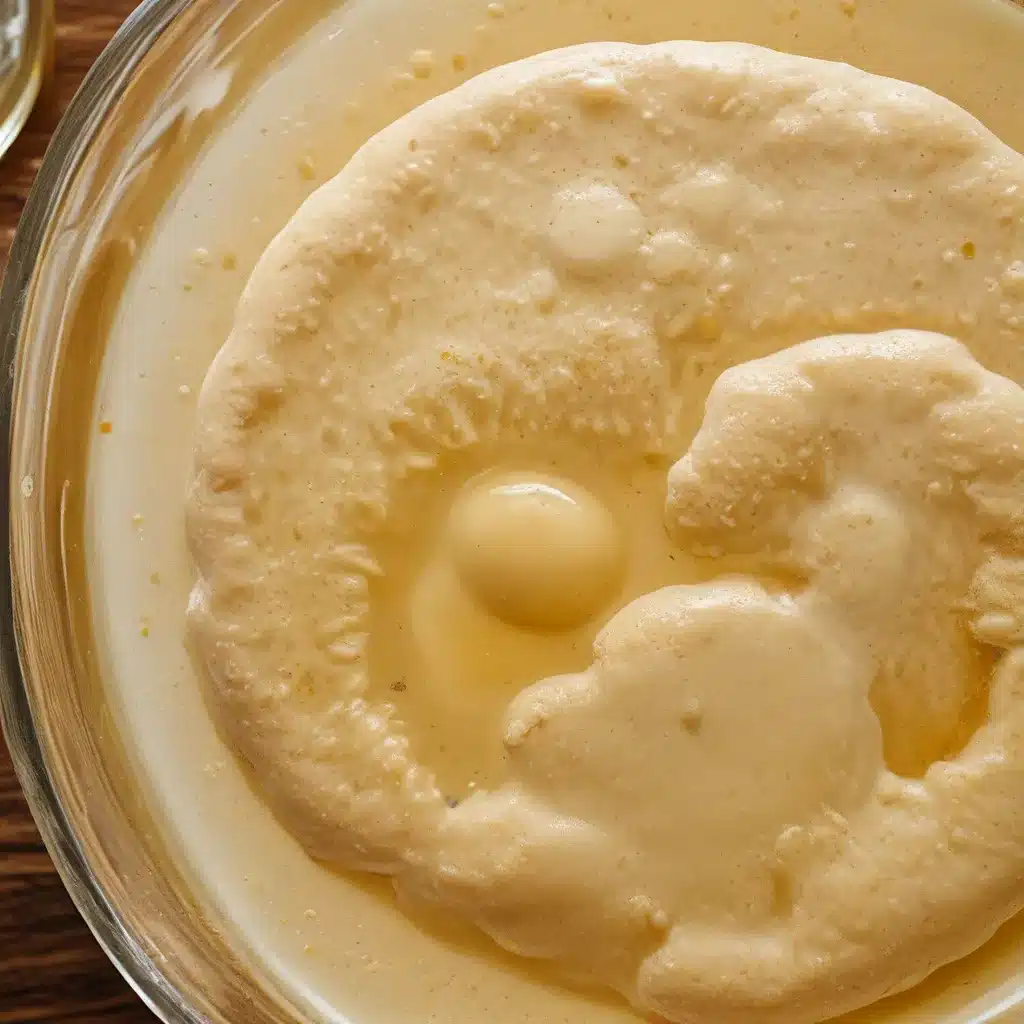
The Yeast Whisperer’s Journey
As a self-proclaimed yeast geek, I’ve always been fascinated by the microscopic powerhouses that make my favorite beverages possible. Yeast – those tiny single-celled workhorses – have been essential to human civilization for millennia, fueling the production of bread, wine, and beer. And let me tell you, there’s nothing more rewarding than taming these wild fermentation masters and coaxing out the most delectable flavors.
My journey into the world of yeast wrangling began a few years back, when I decided to take my homebrewing game to the next level. I mean, sure, you can just buy pre-packaged yeast and let the pros handle all the hard work. But where’s the fun in that? No, I wanted to get my hands dirty, to explore the endless possibilities that lie in the great wide world of wild yeast.
Harvesting the Wild Ones
So, one sunny day, I headed out to my front yard, armed with a few sanitized jars and a determination to capture the elusive yeast that was surely floating around on the breeze. I zeroed in on a honeysuckle bush, those sweet-smelling flowers just begging to be the source of my next fermentation adventure.
Just like the Redditor I read about, I dropped a handful of those fragrant blooms into my jars, topped them off with some freshly cooled wort, and let nature do its thing. After 10 days of anxious waiting, I was rewarded with a bubbly, active fermentation – a sure sign that I had tamed a few wild yeasts.
But the real fun was just beginning. Using my trusty microscope and some basic microbiology techniques, I set out to isolate those individual yeast strains, determined to uncover their unique flavors and fermentation characteristics. And let me tell you, the results were nothing short of mind-blowing.
The Yeast Strain Shuffle
As I peered through the eyepiece, I noticed that four out of the six strains I had isolated contained a mix of yeast and bacteria. Now, some might see that as a recipe for disaster, but not this yeast whisperer. Nope, I was intrigued by the potential sour and funky notes these wild microbes could bring to the table.
Sure enough, when I put those strains to the test in a series of small-scale fermentations, the results were nothing short of spectacular. The beers that emerged from my little mad scientist lab were a veritable flavor explosion – everything from bright citrus and pear to earthy funk and tart acidity. And the color changes? Absolutely mesmerizing.
Just like the BYO article mentioned, my fellow homebrewers were blown away by the sheer diversity of flavors and aromas we encountered, all from a single source. It’s a testament to the incredible adaptability of these microscopic critters, shaped by the unique environments they inhabit.
Mastering the Art of Yeast Wrangling
Of course, working with wild yeasts isn’t all fun and games. As the MoreBeer article cautioned, there are plenty of potential pitfalls to watch out for. Contamination, off-flavors, and unpredictable fermentation characteristics are all very real concerns when you’re dealing with these untamed microbes.
But that’s where the true art of yeast wrangling comes into play. It’s all about honing your sanitation skills, understanding the nuances of each strain, and learning to read the signs of a healthy fermentation. And let me tell you, there’s nothing quite like the thrill of pulling off a successful wild yeast experiment, when your hard work and attention to detail pay off in the form of a truly unique and delicious beer.
The Endless Possibilities of Yeast
As I’ve delved deeper into the world of yeast cultivation, I’ve come to realize that the possibilities are truly endless. Whether you’re harvesting wild strains from your own backyard or getting your hands on some rare, hard-to-find commercial cultures, the potential for creating one-of-a-kind flavors is limited only by your imagination.
Just imagine the possibilities – a crisp, citrusy saison fermented with yeast plucked from a fragrant honeysuckle bush, or a rich, chocolatey stout that owes its complexity to a blend of wild yeasts and bacteria. The team at The Up & Under Pub would be thrilled to help you explore these endless flavor frontiers.
So, whether you’re a seasoned homebrewer or a curious novice, I urge you to embrace your inner yeast whisperer and start taming those wild microbes. Who knows what delicious secrets they might be hiding, just waiting to be unlocked?

